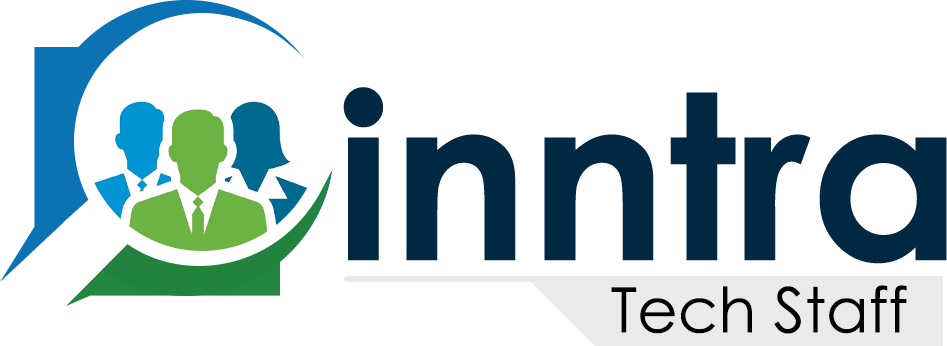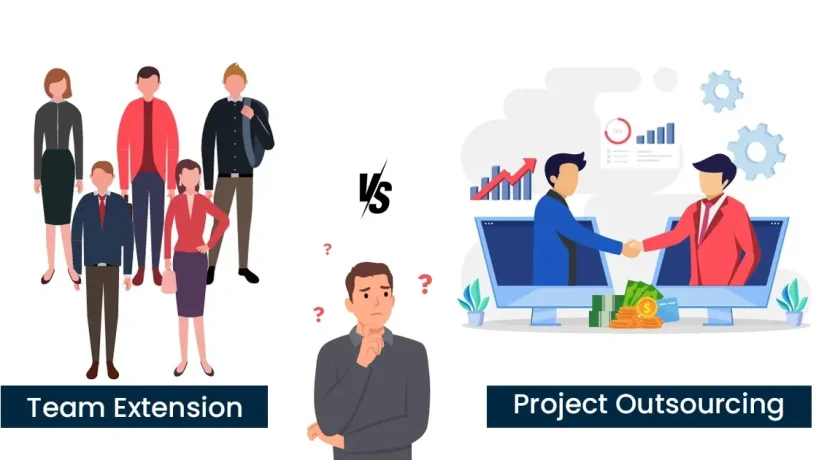Team Extension vs. Full Project Outsourcing: Which Is Right for Your Business
Adding digital technologies to the organization’s workflow to improve productivity is one of the most crucial things in the digital era. Digital transformation is an uphill battle as the demand for software exceeds hiring an in-house development team. Finding the right candidate to fill the technical gap requires assessment and rigorous training. It further needs a lot of money and time for better results. Models like Team extension and full project outsourcing can be handy to resolve your needs. The main difference between these development models is a dedicated full-team extension is completely assigned to the specific project or task, while a team extension combines both in-house and outsourced resources to collaborate on specific tasks or projects. In this blog, we will elaborate on each of the three options to decide on a hiring team to restore IT Staff Augmentation to hire dedicated professionals to extend the team. What is Full Project Outsourcing? Full project outsourcing is the commercial approach to digital information services like NetSuite, SAP, Software Development, and many more. The customer and the employee along with the dedicated testing team and developers make up the dedicated team model. Full Project Outsourcing is dedicated to choosing and keeping the client’s needs for the skill sets and experience provider. A dedicated developer team is suited when the project is not clearly defined and changed during the development process. The main goal of this model is to make a team that addresses the lack of necessary expertise to seamlessly work as own. Perks of a Full Project Outsourcing The Full project outsourcing approach emphasizes long-term collaboration for both teams which works great for the startups to expand quickly. Thus, you will find this model prevailing in the healthcare, banking, communication, and other financial sectors. Any business can leverage resources for peak performance with dedicated project outsourcing. 1. Low Project Costs Cost efficiency is the most important factor of dedicated outsourcing services. With this, you can have access to full-time workers for a low cost on hiring and spending on the training. 2. Transparent Management Standard Outsourcing models often lack transparency in dealing with clients. With dedicated full-project outsourcing, you can consistently have feedback that allows you to make the right changes without much delay. 3. Perpetual Evolution The dedicated team model transcends temporary constraints by offering a seamless mode for continuous integration. This paradigm proves invaluable for projects of an enduring nature for those that demand constant changes and expansion. The onus of change rests solely on your visionary guidance by transforming complex iterations into mere supervisory acts. 4. Unwavering Allegiance In stark contrast to the troublesome nature of freelance engagements, the Full Project outsourcing model epitomizes steadfast commitment. It enables the curation of individuals whose singular focus aligns perfectly with your objectives. This is often codified in contractual terms that foster an environment of profound synergy and exponential productivity gains. Optimal Scenarios for Dedicated Team Implementation The dedicated team model achieves its top efficacy in scenarios characterized by perpetual scalability and when internal resource allocation proves restrictive. Projects of indefinite duration, marked by continuous evolution and expansive scope; Circumstances where local talent acquisition is economically or temporally unfeasible; Contexts devoid of intrinsic software project management acumen or leadership expertise. What is Staff Augmentation? When enterprises seek external expertise for critical IT initiatives to gravitate toward IT Staff Augmentation. It represents a strategic outsourcing approach by integrating talent to address skill deficits within an organization. A crucial distinction exists between staff augmentation and traditional outsourcing. The latter entails comprehensive project delegation, while the former involves the strategic infusion of specialized professionals into existing teams by bridging specific competency gaps. This approach proves particularly efficacious when internal teams possess core expertise and projects demand supplementary skills. It covers all the recruitment processes rather than leveraging curated talent from provider entities. The Staff Augmentation Edge The imminent approach of significant projects need not see recruitment-related issues. Staff augmentation facilitates scalable, project-specific assistance by enabling a laser focus on overarching organizational objectives. 1. Fiscal Optimization Without Quality Compromise Lorem ipsum dolor sit amet, consectetur adipiscing elit. Ut elit tellus, luctus nec ullamcorper mattis, pulvinar dapibus leo. 2. Precision in Skill Acquisition This model enables pinpoint targeting of requisite competencies by facilitating rapid deployment of optimal talent. It transcends the limitations of hope-based hiring by allowing for meticulous selection based on specific skill sets. 3. Access to Unparalleled Expertise The IT Staff Augmentation brings seasoned proficiency by negating the need for extensive training. This expertise translates to efficient task execution by freeing organizational resources for strategic pursuits. 4. Infusion of Objective Perspectives The integration of temporary talent introduces fresh, unbiased viewpoints by offering valuable insights into organizational dynamics and processes. Optimal Scenarios for Staff Augmentation Implementation The staff augmentation model achieves maximal efficacy under specific circumstances When there’s a demand for heightened skill echelons In scenarios requiring enhanced team communication For rapid team expansion with specialized expertise in domains such as IoT, Dart, or software development. This paradigm represents a strategic confluence of flexibility, expertise, and efficiency to meet the dynamic demands of contemporary IT landscapes. Extended Team Model The extended team model represents a sophisticated augmentation of internal capabilities. It transcends mere addition by embodying an integration of external expertise with in-house talent. This IT Resource Augmentation amplifies a nuanced form of outsourcing which is characterized by collaboration and proximity between internal and external teams. It facilitates the rapid, cost-effective expansion of developmental capacity while preserving operational processes. The versatility spans the spectrum from micro-scale initiatives to expansive enterprise software endeavors. It proves particularly advantageous for entities seeking amplification of developmental prowess which is constrained by internal resource limitations. Various Advantages of the Extended Team 1. Synergistic Enhancement This model catalyzes a knowledge transfer from both sides by enriching internal teams with cutting-edge market insights. It fosters a culture of continuous evolution and novel competencies. 2. Focal Alignment The extended team’s priorities synchronize seamlessly with organizational objectives by ensuring unwavering focus on




